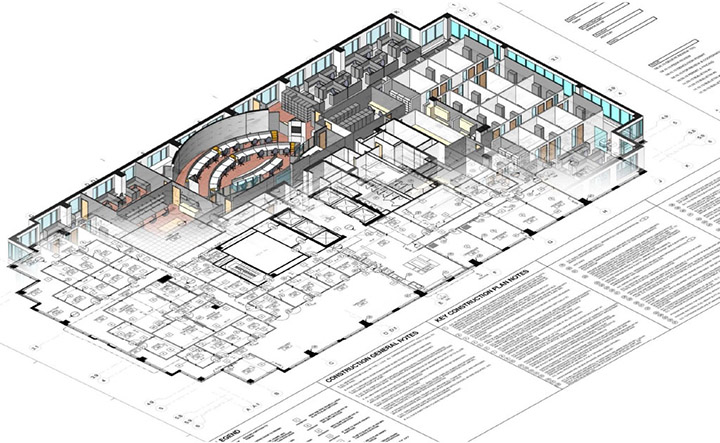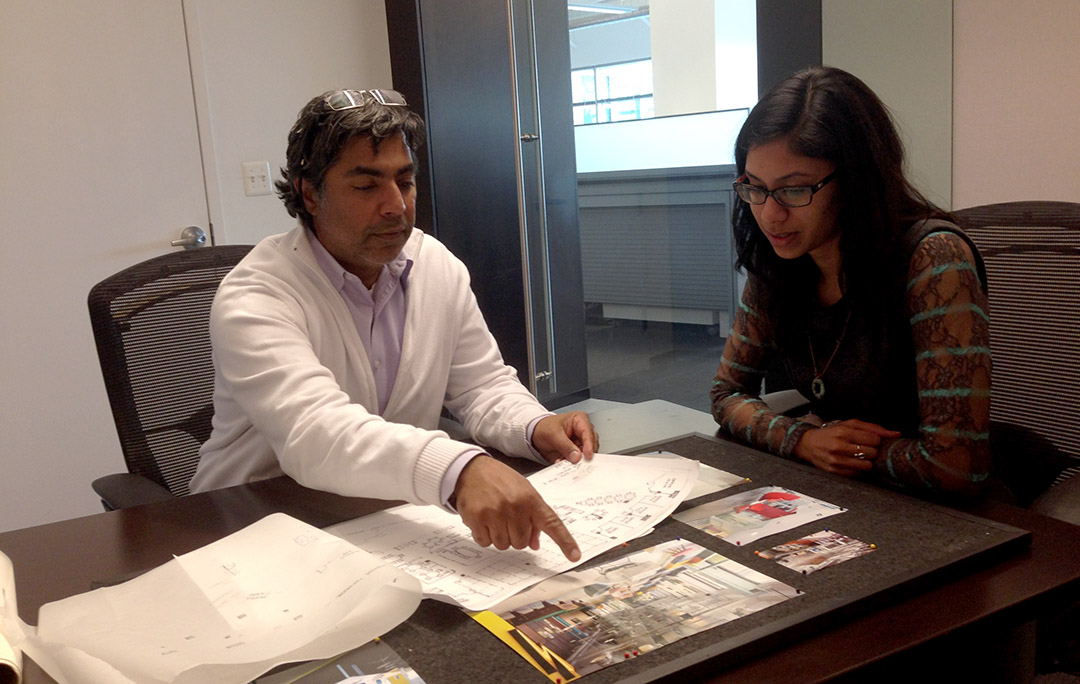An industry leader in the implementation of architectural design technology, DBI had initiated its launch of Autodesk’s Revit (building information modeling (BIM) software) when Farihah Saleem began as an intern in 2008. Having explored the conceptual applications of Revit in her college studio projects, Farihah was encouraged by DBI’s culture of professional development to expand her skill set into plan dimensioning and detailing. She soon became an in-office authority on Revit and its capabilities.
DBI continues to streamline its design and production processes through the use of Revit—and Farihah is at the forefront of the firm’s efforts to foster such innovative change. Now an Architectural Designer, Farihah recognizes that Revit’s well-developed capabilities have revolutionized traditional design processes: “First, there was hand drafting, and then CAD, and now Revit…the next logical step in the evolution of production.” Despite the significant learning curve involved in the transition from CAD to Revit, designers soon realize Revit’s distinct advantages after a brief introduction. One such game-changing feature is the software’s emphasis on collaboration: through its “worksharing” application, multiple users are able to work within, and save changes to, a particular file, so that an entire multi-disciplinary project team can work on the same file simultaneously. Each individual’s work, then, is exposed to all team members from the project’s beginning, so that every person’s contributions to the project undergo continual review by other team members. This technological sophistication enables more efficient collaboration among teams because potential problems are recognized and resolved during the design process instead of in the field.
DBI embraces technology that enhances collaboration and communication—two of our corporate values—because it provides an opportunity to better serve our clients. In Revit, our designers are able to categorize project data in multiple ways, so that a presentation or a set of construction documents has the flexibility to display not only three-dimensional models but also detailed structural and performance analyses and building component information. In addition, Revit is able to communicate with other software programs; it exports files to CAD, SketchUp, 3ds Max, and Excel—yet it also imports data from other programs to add to its own repository of information contained within a model. Farihah notes, in particular, the convenience of being able to import other teams’ redlines from Revu software into Revit, which streamlines the production process by incorporating and displaying all teams’ edits within one file. Clients, too, recognize the advantages of Revit and often request models in an effort to manage facilities more efficiently. Able to perform LEED calculations and energy analysis, a model also provides the exact quantities and location of specific building components, such as a particular manufacturer’s light fixture or a certain type of wall finish.
Empowering designers and their clients, Revit is becoming an indispensable tool within the architectural field. While CAD will always have its place in the industry, Revit, Farihah comments, “is a gateway software” that offers a central hub of information with unmatched integration capabilities. The program “makes design better, easier, and more accessible,” she explains, “so that the focus is on the design itself rather than the technical aspect of making drawings look correct.” DBI, having incorporated Revit into its production processes since 2008, often takes the lead on multidisciplinary projects, whereas firms lacking fluency in Revit are not as well-equipped to assume a directorial role. Similarly, DBI has the capacity to create a master model for a project, which is then provided to other companies working on the same project. Seeking to empower other firms through their own deployment of Revit, DBI now offers training in the software and assistance with the creation of Revit templates. The expansion of such design technology will continue to promote more effective collaboration within DBI and the industry as a whole.

